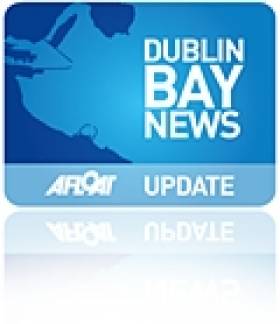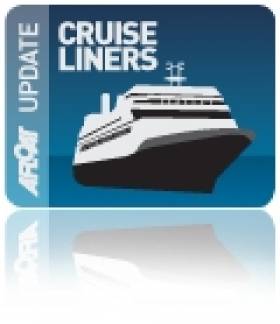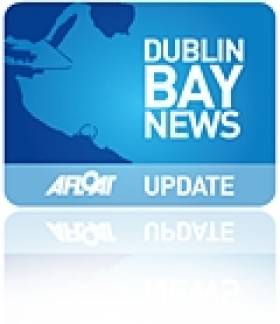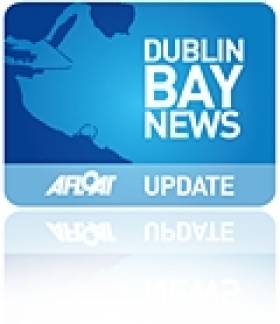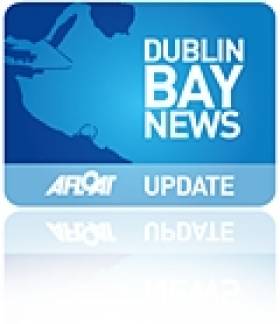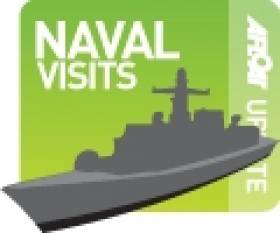Displaying items by tag: Dun Laoghaire Harbour Company
Shackleton Endurance Exhibition – ‘Triumph Against All Odds’
#SHACKLETON – A new exhibition telling the remarkable story of Sir Ernest Shackleton's Imperial Trans-Antarctic expedition of 1914-1917, was officially launched by the Tánaiste Eamon Gilmore earlier this week, writes Jehan Ashmore.
Among those attending the launch of Shackleton Endurance Exhibition in the Dun Laoghaire Harbour Ferry Terminal, were the Hon. Alexandra Shackleton, the only grand-daughter of the Kildare-born explorer, ambassadors from the UK, Australia and Canada, officials from the Dun Laoghaire-Rathdown County Council and the Dun Laoghaire Harbour Company, in which the exhibition is an initiative within the harbour's masterplan.
The exhibition relives the Irish-born explorer's story and his 28 men, where the rescue mission from the abandoning of the exploration ship Endurance, in the "terrible beauty" of the White Continent, is only today, rightly seen as perhaps the most remarkable in exploration history which is told through wall texts, diary excerpts and photographs taken by the expedition's photographer Frank Hurley.
The story explores the shift to living from the ship and onto the pack ice, their daily life in the various camps, the treacherous weather and near-total darkness of the Antarctic winter, their isolation on Elephant Island and their final, triumphant rescue and return.
A full size exact replica of the James Caird, the lifeboat that proved so critical to the rescue mission is on display. Tells of bravery and miraculous survival of its crew and of their faith in their expedition leader, Shackleton is a survival story like no other.
An insight into those who lived through the horrors of the expedition is examined, and of the three Irishmen, Shackleton, Tom Crean from Kerry and Tim McCarthy from neighbouring Cork.
The exhibition was originally curated in the American Museum of Natural History, New York in 2000 and has since toured extensively in America, Ireland, Spain and the UK. The current exhibition is held in association with the Royal Geographical Society (and IBG). For further information visit www.shackletonexhibition.com
Cruise Call Opens New Opportunities for Dun Laoghaire Harbour
#CRUISE CALLS - The docking of the Quest in Dun Laoghaire Harbour this morning marks the first phase of cruise calls this summer as part of a new development to attract cruiseships, writes Jehan Ashmore.
The opening of the cruise sector business which formed part of the Dun Laoghaire Harbour Company's Masterplan is seen as a significant boost to the local economy considering the declining operations of the HSS fast-ferry service in recent years.
The Quest which is operated by Noble Caledonia is on a 9-night 'Garden' Cruise of the UK and Ireland, where prices started from £3,295. She berthed at the Carlisle Pier where for many generations passengers boarded the mail-boats followed by the conventional ferry to Holyhead which last left the route in 1996.
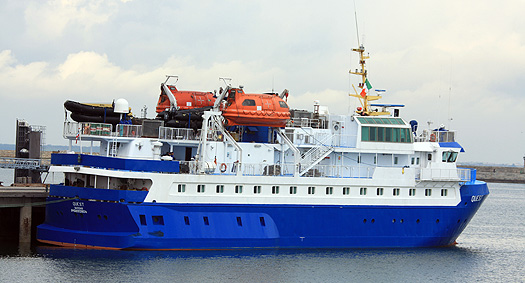
Quest along side in Dun Laoghaire. She carries 50 passengers
At just under 50m long the Quest carries only 50 passengers though this number is set to increase when a further four cruise calls are scheduled this season with larger vessels capable of carrying around 500 passengers.
#CRUISELINERS – The Quest (1992/1,180grt) an ice-strengthened expedition cruiseship, will have the distinction of being the first cruise caller to Dun Laoghaire Harbour in many years. The cruise call next week (24th April) will mark a new era in attracting the cruise sector as part of the harbour's masterplan launched last year, writes Jehan Ashmore.
The Quest will have a German clientele of around 50 passengers, though other larger capacity vessels are scheduled for the summer in this first phase of cruise callers. The cruise sector season is seen to be a significant economic boost to the local economy considering the reduced ferry side of the harbour business in recent years.
Passengers on the Noble Caledonia operated vessel are to take a 9-night 'Garden' Cruise with prices starting from £3,295. She is to set sail from Oban Scotland, then to Ireland, Wales, Cornwall, the Isles of Scilly and Channel Islands.
On her Dun Laoghaire call passengers will head for Powerscourt and nearby Mount Usher gardens in Co. Wicklow. On the second Irish port of call to Waterford as previously reported, they will visit the privately owned Mount Congreve Gardens on the banks of the River Suir.
Notably scheduled in for next year's season is the 'flagship' of the Cunard Line fleet, the 2,620 passenger liner Queen Mary 2, all of 151,400 gross tonnes. She is to make an anchorage call in May 2013, according to Captain Frank Allan, Dun Laoghaire Harbourmaster.
As part of the programme to attract and develop Dun Laoghaire as a cruise call port of call, a new tender docking facility was recently completed. The facility is designed to cater for large cruiseships using the harbour as it will cater for easier access by boats tendering passengers to vessels such as Queen Mary 2 during anchorage calls out in Dublin Bay.
The new tender facility will also benefit the public as the facility can be used for training purposes and for the operation of boat tours around Dublin Bay and trips out to Dalkey Island.
- Dun Laoghaire Harbour
- Cruise Liners
- Irish cruise calls
- Noble Caledonia
- MVQuest
- Cunard Line
- Queen Mary 2
- QM2
- Dun Laoghaire Harbour Company
- Dublin Bay
- Dublin Bay anchorage cruise calls
- Dalkey Island
- Powerscourt Gardens
- Mount Congreve Gardens Waterford
- River Suir
- Dun Laoghaire Harbour Masterplan
- Dublin Bay News
#DUN LAOGHAIRE NEWS - Dun Laoghaire's historic Victorian sea baths are to be replaced with a small 'urban beach' under rejuvenation plans for the harbour, the Irish Independent reports.
County councillors for Dun Laoghaire Rathdown voted on Tuesday to green light the construction of a new sea baths facility, part of the 'master plan' development proposed by the Dun Laoghaire Harbour Company that has raised the ire of the harbour's yacht clubs.
The decision is the latest in a long series of ambitious plans for the Victorian baths, which recently received a new coat of paint as part of the Dulux Let's Colour Project but have lain derelict for 15 years.
Under the new plan, all but two of the buildings on the baths site, which was built in 1843, will be demolished to make way for a new jetty and changing area, which is set to include an 'urban beach' in the future.
Only the baths pavillion and a small outbuilding will be retained for an artist's studio, a gallery and café.
The Irish Independent has more on the story HERE.
Easter Sunday Marks Rebirth of Mariners Maritime Museum
#MARTIME MUSEUM AT EASTER - Earlier this week Dun Laoghaire's maritime museum re-opened its doors to the public after a €4m renovation project was carried out on the apt venue of the former Mariners Church, which incidentally closed on this Easter Day forty years ago, writes Jehan Ashmore.
With a new lease of life the extensively renovated and upgraded museum can look forward to a future. Visitors enter the museum at a new entrance, where in the reception foyer there is a souvenir shop, beyond that in the main body or nave are exhibits displayed, each telling a story and for children there is a Knott Station. To view the initial exhibits on display, click HERE.
In addition there is new facility in the form of a café, which was much needed and where two new stained -glass windows by Peadar Lamb feature, they were sponsored by the Dun Laoghaire Harbour Company. As for the original stained-class windows they were restored to their full glory.
The renovation began in 2006 and was funded by the Government which led to a three-phrased project that involved work carried out from the re-roofing right down to the floorboards. Walls were re-plastered, electric systems modernised and wheel chair-lift and ramps installed.
Work also took place to clean the exterior of the stone-cut granite building hewn from Dalkey Quarry and which led to the consecration of the Kingstown Episcopalian Mariners Church in 1843.
After many generations of mariners and their families, parish numbers dwindled and its use as place worship ended on Easter Sunday 1972. The Maritime Institute of Ireland which runs the museum relocated two years later having had a smaller museum sited along the town's harbour waterfront.
For the next three decades the museum which has attracted locals and visitors from home and overseas, eventually had to close due to deteriorating conditions of an aging building.
Now that the museum is up and running, the M.I.I. which is staffed by volunteers has in recent years also had the support of a FAS scheme of workers, which according to the institute have been invaluable.
The museum is open 11am to 5pm Tuesday to Sunday and every Bank Holiday, for further information visit: www.mariner.ie
Dun Laoghaire Earmarked For Stop on First MOD70 Euro Tour
#DUBLIN BAY NEWS - The inaugural European Tour for the MOD70 trimaran class is set to come to Dublin next summer, pending agreement with the relative authorities in January.
The Irish Times reports that the National Yacht Club is at the head of efforts to include an event in Dun Laoghaire on the first tour for the new 70-foot design.
But apart from the Dun Laoghaire Harbour Company, there has so far been little support from local or national authorities despite organisers waiving the €250,000 franchise fee.
John McKenna of tour organiser OC Thirdpole says he is determined to ensure Dublin is included, and that costs will be borne by the competing teams.
However, he added: "The tour needs to be assured that it will have a major public occasion in Dublin if it is to commit to coming here."

The MOD 70 fleet – plans are afoot to bring the fleet to Dun Laoghaire and moor them off the National Yacht Club at the Carlisle Pier
As previously reported on Afloat.ie, Dublin Bay welcomed its first MOD70 earlier this year when yachtsman Roland Jourdain tested his Veolia Environnement trimaran ahead of the Fastnet Race.
The Irish Times has more on the story HERE.
Dun Laoghaire-Holyhead (HSS) High Speed Sailings Close
The core reason to withdraw the HSS on the 120-minute route which is not to re-open until the 2012 season, rests with the high operating costs of the fuel-thirsty fast-ferry which is powered by four gas-turbine engines. In addition the route's generated most of its turnover during the period May-September, leaving the remaining months unsustainable, as such the company wants the route to be seasonal-only in the long-term.

HSS Stena Explorer departs Dun Laoghaire Harbour on her final sailing this season. Photo: Jehan Ashmore
Passengers and freight customers will instead need to use the company's other Dublin Bay route between Dublin Port and Holyhead. The 3 hour 15-minute central corridor route is served by two ro-pax vessels, Stena Adventurer (2004/43,532 grt) and Stena Nordica (2000/24,206 grt) which operate to a year-round schedule, for times click HERE.
What is not certain is the precise date for resumption of Dun Laoghaire-Holyhead services as Stena Line have only indicated that they hope to reopen in April or May nor it is outlined as to what type of fast-craft would operate the route next year.
With today's break in service for at least the next six months, this is the most significant absence of the revolutionary HSS (High Speed Sea Service) 1500 fast-ferry which made her official maiden voyage on the route from Dun Laoghaire on 10th April 1996. The only other notable occasions when the HSS was off-service was for the short spells to allow for annual dry-docking, refit, repairs or when the route in recent years was partially operated by Stena Lynx III.
The 1500 referred to the number of passengers the Stena Explorer could accommodate. She was the first of the three Finish-built HSS 1500 catamaran vehicle capable carrying craft to enter service on three routes from the UK. The next sister completed HSS Stena Discovery entered service in the same year between Harwich-Hook van Holland and the final of the trio HSS Stena Voyager entered the Belfast-Stranraer route in 1997. Several years ago the HSS ceased operating on the Dutch route and the HSS currently serving on the North Channel is due to be replaced by conventional ferries in mid-November as previously reported on Afloat.ie, to read more click HERE.
On the Dun Laoghaire-Holyhead service the HSS enjoyed the boom years, and at its peak there were five daily round trips. From 2006 onwards the routes fortunes began to decline due to the ending of duty-free sales, competition from low-cost airlines, and the increasing cost of fuel.
In order to stave off further losses, a series of cost cutting measures were implemented over the next five years. Firstly the sailing frequency was reduced then the passage times were increased to reduce fuel consumption at the expense of faster crossings. In addition the company resorted to withdrawing the Stena Explorer during the shoulder months surrounding the summer and as previously mentioned these sailings were covered by the Stena Lynx III.
When the Stena Explorer returned for the summer months, the Stena Lynx III switched to her normal high-season spell on Rosslare-Fishguard sailings in tandem with regular route vessel Stena Europe. This year she served as usual on the St. Georges Channel route with the last high-season sailing completed on 4 September.
Stena Lynx III remained initially at Fishguard until making a repositioning voyage to Dun Laoghaire via the Kish Lighthouse last Wednesday. She berthed adjacent to the now disused HSS berth link-span on St. Michaels Wharf. The Tasmanian built craft has spent previous winter layover periods in Dublin and last year in Dun Laoghaire whereas the Stena Explorer is expected to do so in her home port of Holyhead.
At the neighbouring Carlisle Pier, the former terminal where numerous steam-packets, 'mailboats' and the conventional Sealink/British Rail car-ferries served (the last being the Stena Adventurer better known as St. Columba built in 1977) there are plans for a national diaspora museum.
The centrepiece landmark building would form as part of the masterplan proposed by the Dun Laoghaire Harbour Company as part of a concerted effort to offset the reduced role of ferry operations. The masterplan is also to attract cruiseship business amongst other proposals envisaged.
- Dublin Port
- Dun Laoghaire Harbour Company
- Cruise Liners
- HSS Stena Explorer
- Dun LaoghaireHolyhead
- Stena Lynx III
- Stena Line
- Port of Dublin
- Ports and Shipping News
- Ferry news
- Stena Explorer
- HSS
- St.Michaels Wharf
- Dun Laoghaire Harbour News
- Stena Adventurer
- Irish Sea ferry news
- Cruise ships
- Carlisle Pier Dun Laoghaire
- Stena Nordica
- Closure of HSS sailings
- HSS (High Speed Sea Service)
- Dun Laoghaire masterplan
- Diaspora Museum Dun Laoghaire
French OPV ‘Guard-ship’ to Follow Figaro Fleet From Dun Laoghaire
The 447 tonnes OPV provides communication liaison and assistance should the forty six sailors require during the arduous race including SAR. As such the vessel can deploy a rapid response high speed RIB-craft from an internal dock-well located at the stern.
Otherwise the RIB is used to board fishing vessels as part of fishery monitoring duties and patrolling France's Exclusive Economic Zone out to 200 nautical miles (370 km). She is a Flamant class OPV and was built in 1997 by the Cherbourg based shipyard Constructions Mécaniques de Normandie. The 54m/177-ft craft is equipped with two 12.7mm machine guns.
As Dun Laoghaire is the only international port of call during the four-leg stages of the 1,695 nautical miles (3,390kms) the hosting of the Irish harbour is a welcomed boost to the sailing community and the local economy. Leading off the Carlisle Pier are pontoons where the one-design boats are moored and opposite is the East Pier jetty berth where the PSP Cormoran is docked.
Also at the East Pier is a festival market which is part of the Festival des Bateaux. The three-day festival ends tomorrow and was organised by the race-hosts the National Yacht Club, the Dun Laoghaire Harbour Company and Dun Laoghaire Rathdown County Council. For further festival details click HERE.
The presence of a foreign naval visitor to the harbour was more commonplace particularly during festivals held in the 1980's. In addition to the French, navies from Belgium, The Netherlands were regular festival participants.
- National Yacht Club
- Solitaire du Figaro
- Dun Laoghaire Harbour Company
- Dun Laoghaire Rathdown County Council
- Dun Laoghaire Harbour
- French Navy
- Festival des Bateaux
- Dun Laoghaire Harbour News
- Naval Visits
- PSP Cormoran
- Dun Laoghaire East Pier
- Dun Laoghaire pierheads
- Guardship
- Dun LaoghaireSables d'Lonne
- Vedee
- Dun Laoghaire Festivals
French Naval Vessel Escorts 'Figaro' Fleet to Dun Laoghaire
To celebrate the stopover of the four-stage 1,695 nautical mile (3,390 km) race, Dun Laoghaire Rathdown County Council, Dun Laoghaire Harbour Company and the National Yacht Club have joined forces to create the Festival des Bateaux (12-14 Aug).
A festival highlight will be a fireworks display which be held on Friday night at 10pm on the East Pier. In addition during the three-day festival programme includes live bands, street entertainment and a market on the Carlisle Pier. For more details and times of the free event go to www.dlrevents.ie
Visitors to the East Pier can take a closer view of the PSP Cormoran from the quayside where the 23 knot offshore patrol vessel (OPV) will be berthed. The Flamant class (OPV) entered service in 1997 after completion by Constructions Mécaniques de Normandie, Cherbourg, where the 477 tonnes vessel is based.
The 54m/177-ft vessel has two 12.7mm machine guns and is used for fishery monitoring, SAR and patrolling France's Exclusive Economic Zone out to 200 nautical miles / 370 km. In addition she is equipped with a high speed RIB-craft that can be deployed from an internal dock-well at the stern.
A Brighter Future for Dun Laoghaire Maritime Museum
For several years the museum has been closed for vital repair and extensive renovation work. In October the M.I.I. will celebrate their 70th anniversary which will be marked by a 'soft launch' and in the following year the museum is to be officially re-opened in Easter 2012.





























